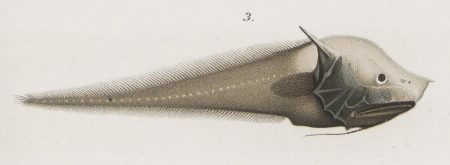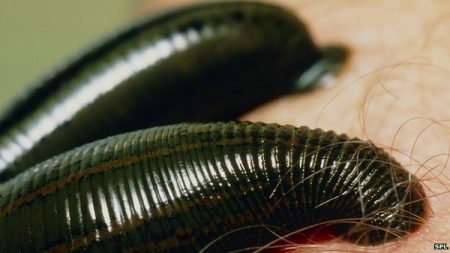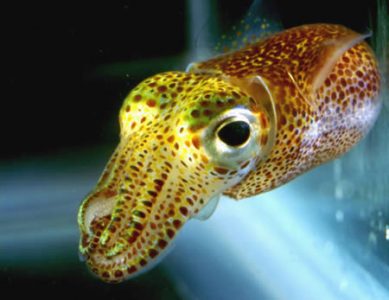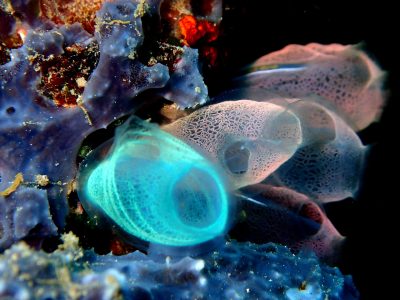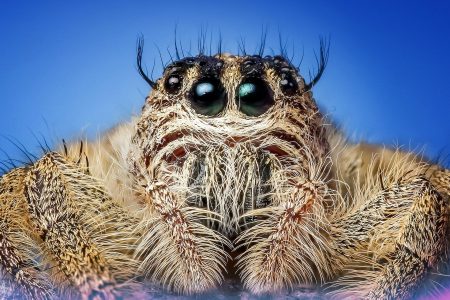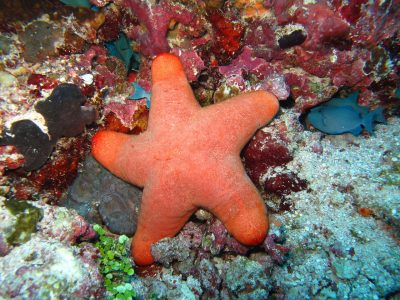- What makes animals tick can be very different from our brains.
Your brain is one of, if not the most important part of your body. It controls everything you do and without it, well… There’s no you.
The same goes for (most) animals. They need a brain — but those brains are often very different from yours.
Here is a collection of some of the strangest brains out there. Some are big, others are small, and some are just plain not here.
1) The Smallest Brain — Bony-eared assfish
It can be a bit challenging to determine which animal has the smallest brain. After all, size doesn’t correlate with efficiency, and many animals have much bigger brains than humans, for example.
So, a common way to determine the size of an animal’s brain is to compare it to the size of its body. Looking at it like this, there’s a clear winner (or loser) — the bony-eared assfish.
No, we’re not making that name up.
The bony-eared assfish is a type of deep-sea eel. Its brain weighs less than 1/1000 of its body weight, which is the comparatively smallest brain we’ve discovered so far.
To put that into perspective, the human brain-to-body-weight ratio is 1/50. But it’s okay for the assfish — in the deep sea, there are few predators so it doesn’t really need its brain.
2) 32 Brains in One Body — Leeches
You’re so smart, even with just one brain. Now imagine if you had more of them — maybe 32 brains!
Well, that’s how it is for leeches. Their bodies are divided into 32 segments, each of which has its own brain.
Now, technically, they’re not brains but ganglia — collections of a bunch of nerve cells. They work in a series as one organ to give a leech its more or less considerable brain power.
In practice, however, there’s no difference between each of the ganglia and they operate more or less independently. So, in the end, the slimy bloodsuckers end with 32 brains.
Also, they have nine pairs of testicles. But we’ll talk about that some other time.
3) Brain with a Hole in the Middle — Squids
When it comes to strangely shaped brains, you’ll be hard-pressed to find one more bizarre than that of a squid. Their brains are essentially donuts.
The squid’s brain has a giant hole in the middle. That’s because the animal’s esophagus runs right down the middle of its brain.
The weirdly shaped brain most likely developed because, let’s face it, there’s not a lot of space available inside a squid’s head. They’re just making the most efficient use of the room they have.
But the donut brain presents one challenge for the squid. Everything it eats has to pass through the hole in its brain.
If a squid swallows too big of a piece, it could end up giving itself fatal brain damage as the morsel squeezes its brain into mush.
4) Eating Your Brain — Sea Squirts
Sea squirts are sedentary filter feeders crowding the world’s oceans. But like many sea creatures, they begin their life as larvae.
These larvae have a kind-of-sort-of brain because they need to find a good place for settling down. But once they find that place, the brain has served its purpose.
So, the sea squirt larva suctions onto whatever rock it discovered. It then proceeds to digest its eyes, internal organs — and even its brain.
It uses the energy from its now-useless gray matter to develop the filter-feeding equipment it needs. The great cycle of sea squirt life is now complete — it will never leave again so it just doesn’t need a brain.
5) Thinking on Their Feet — Spiders
Bigger spiders have their brains in their head cavities as you’d expect. But when spiders start getting smaller, their brains don’t actually shrink proportionately.
This results in a weird situation where the spider’s brain is too big for its head. It’s alright, though, since spiders have this whole thing figured out — probably because their brains are so big.
Many smaller spider species have redistributed parts of their brains into their body cavities and legs. Some even develop small hollow bulges in their legs to make more space for their brain.
Their relatively huge brains are essential for spiders’ highly advanced hunting techniques and web building. And they better be good at hunting because the ginormous brains eat up so much energy that spiders live at more or less constant risk of starvation.
6) Suffering from a Big Brain — Cavalier King Charles Spaniel
Spiders aren’t the only animals with brains too big for their heads. The Cavalier King Charles Spaniel’s brain doesn’t fit in its head either — and it’s all our fault.
After generations of selective breeding (read: inbreeding), the skulls of these British dogs have shrunk to the point that there’s not enough space for their brains. As a result, a part of their brain squeezes inside their spinal cords, blocking the flow of cerebral fluid and forming air pockets in their spines.
Needless to say, the Cavaliers suffer from a slew of health issues as a result. The most obvious is air scratching — doing the scratching motion with their hind legs without actually scratching their bodies.
7) No Brain at All — Multiple Species
You’d think all animals need a brain to live. But there are many different species — especially in the seas — that just don’t have a brain as we classify it.
Starfish and sea cucumbers, for example, have basic neural structures, but those structures aren’t real brains. They process neural signals, but starfish and sea cucumbers function entirely on instinct without any recognizable thought.
Other animals, like the Portuguese Man-o-War, aren’t actually single animals. They’re collections of highly specialized polyps that have adapted to survive as a group — but none of them function as a brain.
And then there are sea animals you might confuse for plants, like anemones and sea lilies. They have rudimentary nerves that can retract their food-gathering tentacles if something touches them, but apart from that, they have no brain function.
Hits: 0

